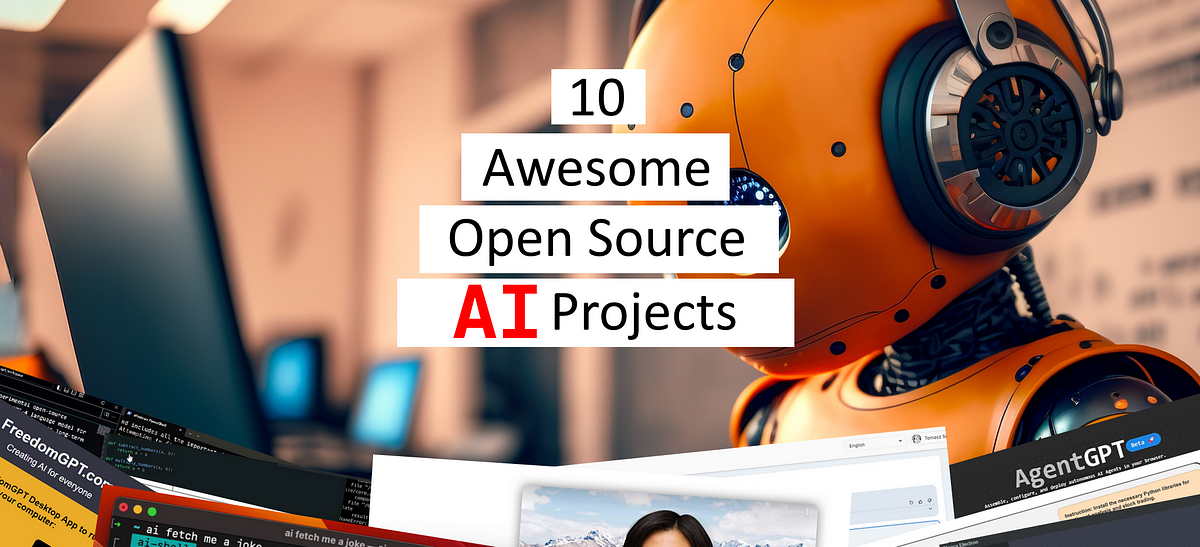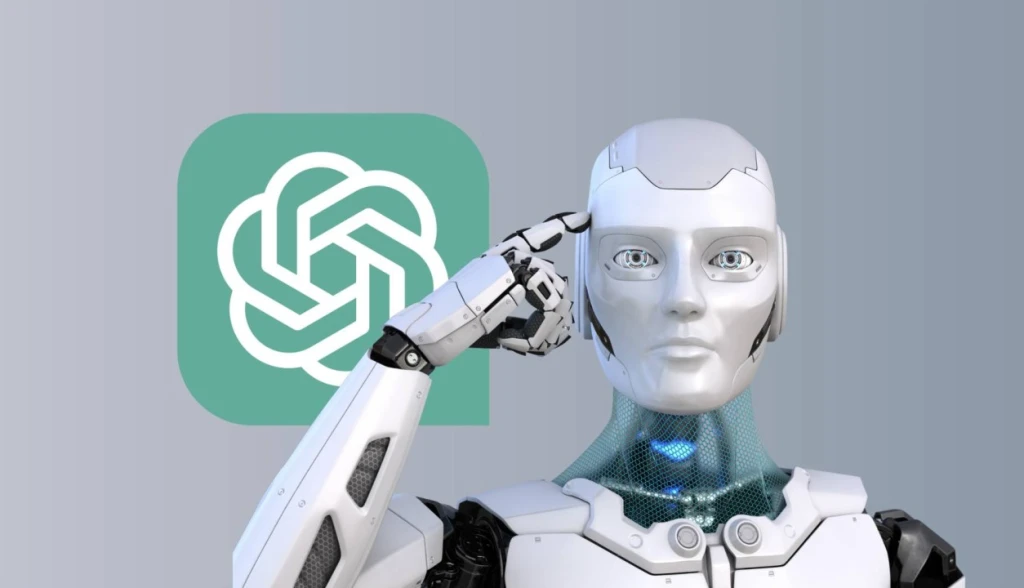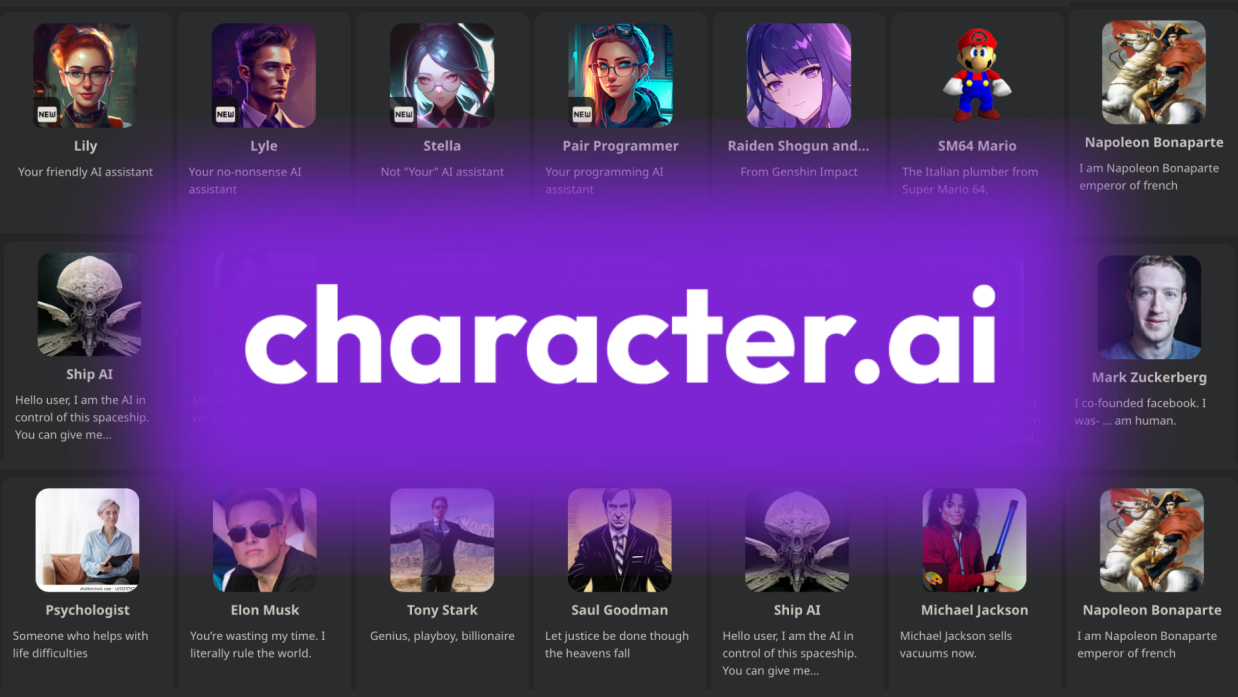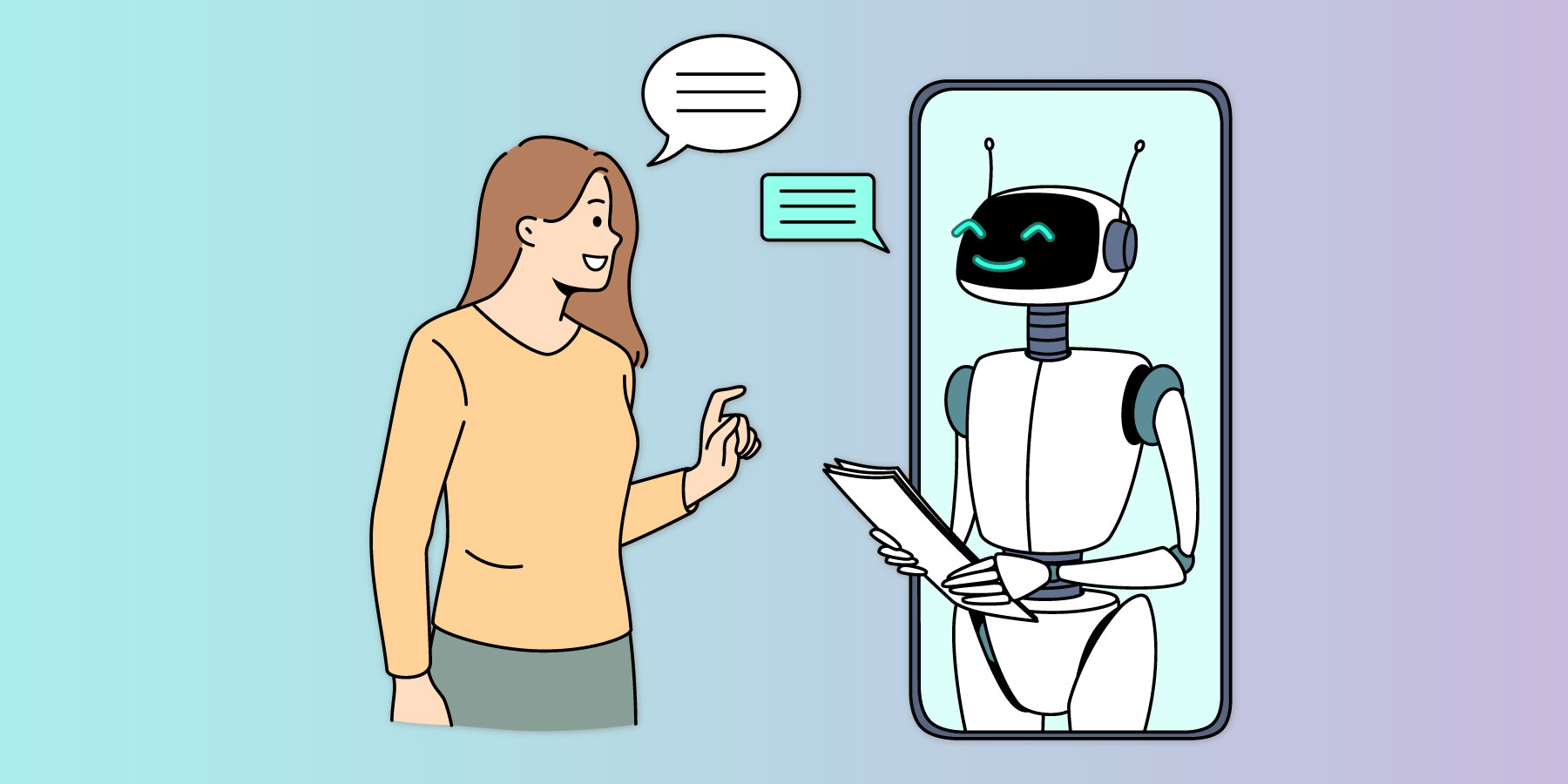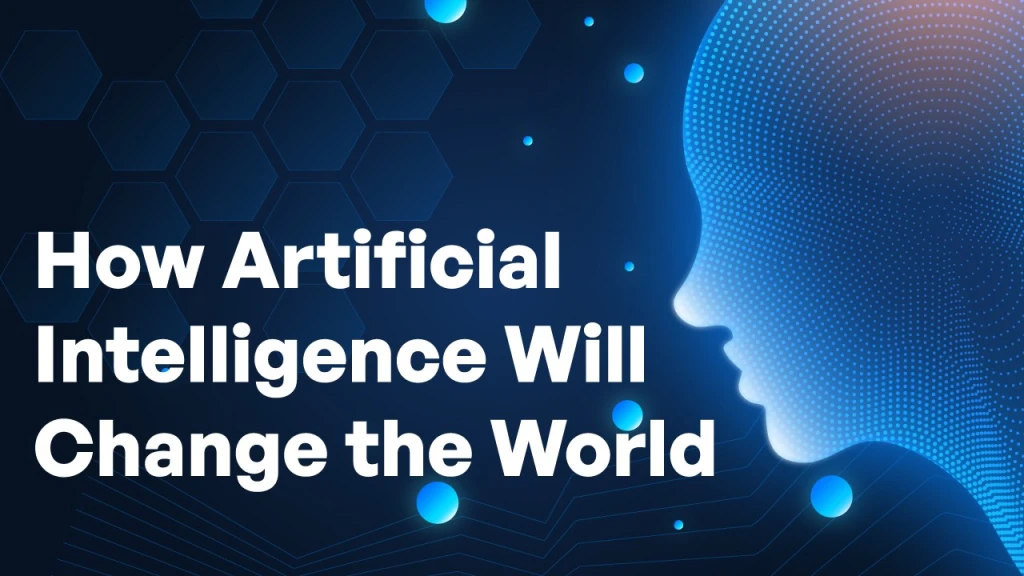Test AI op UW website in 60 seconden
Zie hoe onze AI uw website direct analyseert en een gepersonaliseerde chatbot creëert - zonder registratie. Voer gewoon uw URL in en zie hoe het werkt!
Inleiding: De gouden eeuw van open source AI
Open-source AI-projecten zijn getransformeerd van academische curiosa tot productieklare tools die applicaties in verschillende sectoren aandrijven. Ze hebben de toegang tot geavanceerde technologie gedemocratiseerd, maatwerk mogelijk gemaakt dat propriëtaire systemen niet kunnen evenaren en levendige communities gecreëerd die kennisdeling en innovatie versnellen.
Dit artikel onderzoekt tien van de meest indrukwekkende open-source AI-projecten van dit moment. Deze projecten onderscheiden zich niet alleen door hun technische mogelijkheden, maar ook door hun impact op het bredere AI-ecosysteem, hun innovatieve benaderingen voor het oplossen van complexe problemen en hun potentieel om de toekomst van de ontwikkeling van kunstmatige intelligentie vorm te geven.
Van grote taalmodellen die concurreren met commerciële oplossingen tot gespecialiseerde tools die specifieke problemen met opmerkelijke efficiëntie oplossen, vertegenwoordigen deze projecten het voortouw in communitygedreven AI-ontwikkeling. Of u nu onderzoeker bent op het gebied van machine learning, applicatieontwikkelaar of gewoon geïnteresseerd bent in de toekomst van AI-technologie: deze projecten zijn nu de moeite waard om in de gaten te houden.
1. Knuffelende gezichtstransformatoren: de open source AI-hub
Waarom het baanbrekend is
De Transformers-bibliotheek zelf is al indrukwekkend genoeg: het biedt een uniforme API voor het werken met duizenden vooraf getrainde modellen. Maar wat Hugging Face echt revolutionair maakt, is het bredere ecosysteem:
Model Hub: Met meer dan 150.000 gratis beschikbare vooraf getrainde modellen is de Hub uitgegroeid tot 's werelds grootste opslagplaats van gedeelde machine learning-modellen, voor taal-, beeld-, audio- en multimodale toepassingen.
Datasets: Duizenden samengestelde, versiegecontroleerde datasets voor het trainen en evalueren van modellen, waarmee een van de grootste obstakels voor AI-ontwikkeling wordt aangepakt.
Spaces: Een infrastructuur voor het implementeren van interactieve machine learning-demo's, waarmee iedereen werkende applicaties kan demonstreren die zijn gebouwd op open modellen.
Collaboratieve workflows: Git-gebaseerd versiebeheer voor modellen en datasets, waardoor samenwerking aan AI-projecten net zo gestroomlijnd is als softwareontwikkeling.
Impact in de praktijk
Hugging Face is de ruggengraat geworden van talloze AI-productiesystemen, van startups tot Fortune 500-bedrijven. Door een uitgebreide infrastructuur te bieden voor de volledige levenscyclus van machine learning, heeft het de drempels voor de implementatie van geavanceerde AI-mogelijkheden drastisch verlaagd.
Het community-aspect kan niet genoeg worden benadrukt: Hugging Face heeft een cultuur van delen en samenwerking gecreëerd die de democratisering van AI versnelt. Onderzoekers kunnen nieuwe architecturen delen, professionals kunnen gespecialiseerde modellen voor hun use cases vinden en iedereen profiteert van de collectieve kennis en middelen.
Julien Chaumond, medeoprichter van Hugging Face, benadrukt deze communityfocus: "Onze missie is om goede machine learning te democratiseren. Iedereen laten bijdragen en voortbouwen op elkaars werk is de snelste weg naar betere AI."
Opvallende kenmerken en mogelijkheden
AutoClass-interface: selecteert automatisch het optimale, vooraf getrainde model voor specifieke taken, wat de implementatie vereenvoudigt.
Modelkaarten: gestandaardiseerde documentatie die transparantie biedt over de mogelijkheden, beperkingen en vooroordelen van modellen.
Optimale bibliotheek: tools voor het optimaliseren van modelprestaties op verschillende hardwareplatforms.
Evaluatieharnas: gestandaardiseerde benchmarking om modelprestaties te vergelijken.
Hugging Face Transformers illustreert hoe open source een sector fundamenteel kan transformeren en een gedeelde infrastructuur kan creëren die het gehele AI-ecosysteem ten goede komt.
2. LangChain: het bouwen van het raamwerk voor AI-toepassingen
Waarom het baanbrekend is
LangChain biedt een uitgebreid framework voor de ontwikkeling van applicaties die werken met taalmodellen en dicht daarmee de kritieke kloof tussen ruwe AI-mogelijkheden en bruikbare toepassingen:
Composable Chains: Een flexibele architectuur voor het combineren van meerdere AI-mogelijkheden in coherente workflows.
Agents: Implementatie van autonome AI-systemen die kunnen redeneren, plannen en taken kunnen uitvoeren door verschillende tools aan te roepen.
Memory Systems: Verschillende methoden om context te behouden in conversaties en processen in de loop van de tijd.
Retrieval-Augmented Generation: Tools voor het baseren van taalmodellen op specifieke gegevensbronnen, waardoor hun nauwkeurigheid en bruikbaarheid voor domeinspecifieke toepassingen aanzienlijk worden verbeterd.
Toolgebruik: Gestandaardiseerde interfaces voor AI-systemen om te communiceren met externe applicaties, databases en API's.
Impact in de praktijk
LangChain is een essentiële infrastructuur geworden voor duizenden AI-toepassingen, van automatisering van klantenservice tot platforms voor contentgeneratie en gespecialiseerde onderzoekstools. De flexibele architectuur stelt ontwikkelaars in staat om snel prototypes te maken en complexe AI-toepassingen te itereren die anders maanden maatwerk zouden vergen.
Het project illustreert hoe open source innovatie versnelt: door gestandaardiseerde componenten te bieden voor veelvoorkomende patronen in de ontwikkeling van AI-toepassingen, stelt LangChain ontwikkelaars in staat zich te concentreren op unieke waarde in plaats van op het herbouwen van basisinfrastructuur.
Harrison Chase, medeoprichter van LangChain, beschrijft deze ethos: "Ons doel is om het 10x sneller te maken om daadwerkelijk bruikbare AI-toepassingen te bouwen. Dat betekent dat we alle problemen rondom hen moeten oplossen – verbinding maken met gegevensbronnen, context behouden, betrouwbare workflows uitvoeren – en niet alleen API-aanroepen naar taalmodellen uitvoeren."
Opvallende kenmerken en mogelijkheden
Documentloaders: Vooraf gebouwde connectoren voor tientallen gegevensbronnen, van pdf's tot webpagina's en databases.
Vectoropslag: Integraties met vectordatabases voor semantische zoekmogelijkheden.
Gestructureerde output: Tools voor het betrouwbaar extraheren van gestructureerde data uit ongestructureerde tekst.
Evaluatiekader: Methoden voor het testen en verbeteren van applicatieprestaties.
LangChain laat zien hoe open-sourceprojecten volledig nieuwe categorieën kunnen creëren en snel kritieke infrastructuur kunnen worden voor een opkomende technologie.
3. LocalAI: AI naar uw hardware brengen
Waarom het baanbrekend is
LocalAI biedt een compleet platform voor het lokaal uitvoeren van AI-modellen, met een architectuur die prioriteit geeft aan toegankelijkheid en bruikbaarheid:
API-compatibiliteit: Implementeert OpenAI-compatibele API's lokaal, waardoor ontwikkelaars kunnen schakelen tussen cloud- en lokale implementatie zonder codewijzigingen.
Model Zoo: Vooraf geconfigureerde toegang tot een breed scala aan open modellen, van taalmodellen en beeldgenerators tot audioverwerking.
Hardware-optimalisatie: Automatische configuratie op basis van beschikbare hardware, waardoor modellen efficiënt werken op alles, van gaminglaptops tot gespecialiseerde edge-apparaten.
Kwantiseringsondersteuning: Ingebouwde tools voor het comprimeren van modellen om op beperkte hardware te draaien met behoud van acceptabele prestaties.
Privacy-first ontwerp: Volledige datasoevereiniteit zonder externe communicatie, waardoor use cases mogelijk zijn waarbij dataprivacy cruciaal is.
Impact in de praktijk
LocalAI heeft compleet nieuwe categorieën applicaties mogelijk gemaakt waar cloudgebaseerde AI onpraktisch zou zijn, van offline spraakassistenten tot privacygevoelige medische toepassingen en industriële systemen in omgevingen zonder betrouwbare connectiviteit.
Voor ontwikkelaars en organisaties die zich zorgen maken over dataprivacy of cloudkosten, biedt LocalAI een praktisch alternatief dat de meeste mogelijkheden behoudt en tegelijkertijd tegemoetkomt aan deze zorgen. Het is met name waardevol in gereguleerde sectoren waar vereisten voor databeheer de implementatie van cloudgebaseerde AI-services lastig maken.
Enrico Bergamini, een belangrijke bijdrager aan LocalAI, benadrukt deze focus: "AI moet voor iedereen toegankelijk zijn, niet alleen voor mensen met enorme cloudbudgetten of gespecialiseerde hardware. We bewijzen dat je indrukwekkende AI-mogelijkheden kunt gebruiken op de hardware die je al hebt."
Opvallende kenmerken en mogelijkheden
Containergebaseerde implementatie: Eenvoudige installatie met Docker voor consistente implementatie in verschillende omgevingen.
Fluister-API: Spraak-naar-tekst-mogelijkheden die volledig lokaal worden uitgevoerd.
Stabiele diffusie-integratie: Beeldgeneratie zonder externe services.
Multimodale ondersteuning: tekst-, beeld-, audio- en videomogelijkheden in één uniform systeem.
LocalAI laat zien hoe open source direct de beperkingen van commerciële benaderingen kan aanpakken door alternatieven te creëren die prioriteit geven aan verschillende afwegingen en nieuwe use cases mogelijk maken.
4. Ollama: Vereenvoudiging van de lokale LLM-implementatie
Waarom het baanbrekend is
Ollama combineert technische verfijning met uitzonderlijke bruikbaarheid om lokale AI toegankelijk te maken:
Installatie met één regel: Om te beginnen is slechts één opdracht nodig, zonder complexe configuratie of afhankelijkheden.
Modelbibliotheek: Een samengestelde verzameling geoptimaliseerde modellen, elk met verschillende afwegingen ten aanzien van mogelijkheden en benodigde resources.
Opdrachtregelinterface: Eenvoudige, intuïtieve opdrachten voor het downloaden van modellen en het starten van gesprekken.
API-server: Ingebouwd API-eindpunt voor het integreren van lokale modellen in applicaties en workflows.
Modelbeheer: Eenvoudige tools voor het downloaden, bijwerken en verwijderen van modellen.
Impact in de praktijk
Ollama heeft het publiek voor lokale AI-modellen aanzienlijk vergroot, waardoor ze toegankelijk zijn geworden voor ontwikkelaars, onderzoekers en liefhebbers die anders misschien zouden zijn afgeschrikt door technische complexiteit. Dit heeft het experimenteren en de acceptatie in talloze domeinen versneld.
Voor privacybewuste gebruikers en organisaties biedt Ollama een praktische manier om moderne AI-mogelijkheden te verkennen zonder gevoelige gegevens naar externe services te sturen. De eenvoud ervan heeft het bijzonder populair gemaakt in onderwijsomgevingen, waar het hands-on leren mogelijk maakt zonder dat cloudaccounts of gespecialiseerde hardware nodig zijn.
Matt Schulte, medewerker van Ollama, legt deze focus uit: "We wilden het runnen van een lokale LLM net zo eenvoudig maken als het installeren van een andere applicatie. De technologie is complex, maar het gebruik ervan zou dat niet moeten zijn."
Opvallende functies en mogelijkheden
Modelaanpassing: Tools voor het maken van gespecialiseerde versies van modellen met aangepaste parameters.
Conversatiecontextbeheer: Behoudt context tussen query's voor natuurlijke interacties.
GPU-versnelling: Automatisch gebruik van beschikbare GPU-bronnen voor verbeterde prestaties.
Multimodale ondersteuning: Breidt uit van tekst naar afbeeldingen en andere gegevenstypen.
Ollama illustreert het principe dat echt transformatieve technologie onzichtbaar wordt, waardoor geavanceerde AI-mogelijkheden aanvoelen als elke andere tool op uw computer.
Test AI op UW website in 60 seconden
Zie hoe onze AI uw website direct analyseert en een gepersonaliseerde chatbot creëert - zonder registratie. Voer gewoon uw URL in en zie hoe het werkt!
5. Mistral AI: nieuwe normen stellen voor open modellen
Meta Description: Discover the most groundbreaking open source AI projects that are pushing boundaries, democratizing advanced technology, and creating new possibilities for developers worldwide.
Introduction: The Golden Age of Open Source AI
We're living in an unprecedented era for artificial intelligence development. While commercial AI solutions continue to make headlines, the open source community has become an extraordinary force driving innovation, accessibility, and transparency in AI technology. These community-driven projects are not just alternatives to proprietary systems—in many cases, they're pushing the boundaries of what's possible and setting new standards for the entire industry.
Open source AI projects have transformed from academic curiosities into production-ready tools powering applications across industries. They've democratized access to cutting-edge technology, enabled customization that proprietary systems can't match, and created vibrant communities that accelerate knowledge sharing and innovation.
This article explores ten of the most impressive open source AI projects right now. These projects stand out not just for their technical capabilities but for their impact on the broader AI ecosystem, their innovative approaches to solving complex problems, and their potential to shape the future of artificial intelligence development.
From large language models rivaling commercial offerings to specialized tools solving specific problems with remarkable efficiency, these projects represent the cutting edge of community-driven AI development. Whether you're a machine learning researcher, an application developer, or simply interested in the future of AI technology, these are the projects worth watching right now.
1. Hugging Face Transformers: The Open Source AI Hub
Hugging Face Transformers has evolved from a simple NLP library into what many consider the GitHub for machine learning—a comprehensive ecosystem that's fundamentally changing how AI models are developed, shared, and deployed.
Why It's Groundbreaking
The Transformers library itself is impressive enough—providing a unified API for working with thousands of pre-trained models. But what makes Hugging Face truly revolutionary is its broader ecosystem:
Model Hub: With over 150,000 freely available pre-trained models, the Hub has become the world's largest repository of shared machine learning models, spanning language, vision, audio, and multimodal applications.
Datasets: Thousands of curated, version-controlled datasets for training and evaluating models, addressing one of the most significant barriers to AI development.
Spaces: An infrastructure for deploying interactive machine learning demos, enabling anyone to showcase working applications built on open models.
Collaborative Workflows: Git-based version control for models and datasets, making collaboration on AI projects as streamlined as software development.
Real-World Impact
Hugging Face has become the backbone of countless production AI systems, from startups to Fortune 500 companies. By providing a comprehensive infrastructure for the entire machine learning lifecycle, it has dramatically reduced the barriers to implementing advanced AI capabilities.
The community aspect cannot be overstated—Hugging Face has created a culture of sharing and collaboration that's accelerating the democratization of AI. Researchers can share new architectures, practitioners can find specialized models for their use cases, and everyone benefits from the collective knowledge and resources.
Julien Chaumond, co-founder of Hugging Face, emphasizes this community focus: "Our mission is to democratize good machine learning. Having everyone contribute and build on each other's work is the fastest path to better AI."
Notable Features and Capabilities
AutoClass Interface: Automatically selects the optimal pre-trained model for specific tasks, simplifying implementation.
Model Cards: Standardized documentation that provides transparency about model capabilities, limitations, and biases.
Optimum Library: Tools for optimizing model performance across different hardware platforms.
Evaluation Harness: Standardized benchmarking to compare model performance.
Hugging Face Transformers exemplifies how open source can fundamentally transform an industry, creating a shared infrastructure that benefits the entire AI ecosystem.
2. LangChain: Building the Framework for AI Applications
LangChain emerged to solve a critical problem: while foundation models provide impressive capabilities, building practical applications with them requires significant additional infrastructure. In just over a year, it has become the de facto standard for developing LLM-powered applications.
Why It's Groundbreaking
LangChain provides a comprehensive framework for developing applications powered by language models, addressing the critical gap between raw AI capabilities and useful applications:
Composable Chains: A flexible architecture for combining multiple AI capabilities into coherent workflows.
Agents: Implementation of autonomous AI systems that can reason, plan, and execute tasks by calling different tools.
Memory Systems: Various methods for maintaining context in conversations and processes over time.
Retrieval-Augmented Generation: Tools for grounding language models in specific data sources, dramatically improving their accuracy and usefulness for domain-specific applications.
Tool Usage: Standardized interfaces for AI systems to interact with external applications, databases, and APIs.
Real-World Impact
LangChain has become essential infrastructure for thousands of AI applications, from customer service automation to content generation platforms to specialized research tools. Its flexible architecture allows developers to rapidly prototype and iterate on complex AI applications that would otherwise require months of custom development.
The project exemplifies how open source accelerates innovation—by providing standardized components for common patterns in AI application development, LangChain lets developers focus on unique value rather than rebuilding basic infrastructure.
Harrison Chase, co-founder of LangChain, describes this ethos: "Our goal is to make it 10x faster to build AI applications that are actually useful. That means solving all the surrounding problems—connecting to data sources, maintaining context, executing reliable workflows—not just making API calls to language models."
Notable Features and Capabilities
Document Loaders: Pre-built connectors for dozens of data sources, from PDFs to web pages to databases.
Vector Stores: Integrations with vector databases for semantic search capabilities.
Structured Output: Tools for reliably extracting structured data from unstructured text.
Evaluation Framework: Methods for testing and improving application performance.
LangChain demonstrates how open source projects can create entirely new categories and rapidly become critical infrastructure for an emerging technology.
3. LocalAI: Bringing AI to Your Hardware
LocalAI represents a powerful movement in AI development—bringing sophisticated models to local hardware without requiring cloud services or expensive specialized equipment.
Why It's Groundbreaking
LocalAI provides a complete platform for running AI models locally, with an architecture that prioritizes accessibility and practicality:
API Compatibility: Implements OpenAI-compatible APIs locally, allowing developers to switch between cloud and local deployment without code changes.
Model Zoo: Pre-configured access to a wide range of open models, from language models to image generators to audio processing.
Hardware Optimization: Automatic configuration based on available hardware, making models run efficiently on everything from gaming laptops to specialized edge devices.
Quantization Support: Built-in tools for compressing models to run on limited hardware while maintaining acceptable performance.
Privacy-First Design: Complete data sovereignty with no external communication, enabling use cases where data privacy is critical.
Real-World Impact
LocalAI has enabled entirely new categories of applications where cloud-based AI would be impractical, from offline voice assistants to privacy-sensitive medical applications to industrial systems in environments without reliable connectivity.
For developers and organizations concerned about data privacy or cloud costs, LocalAI provides a practical alternative that maintains most capabilities while addressing these concerns. It's particularly valuable in regulated industries where data governance requirements make cloud AI services challenging to implement.
Enrico Bergamini, a key contributor to LocalAI, highlights this focus: "AI should be accessible to everyone, not just those with massive cloud budgets or specialized hardware. We're proving that you can run impressive AI capabilities on the hardware you already have."
Notable Features and Capabilities
Container-Based Deployment: Simple setup using Docker for consistent deployment across environments.
Whisper API: Speech-to-text capabilities that run entirely locally.
Stable Diffusion Integration: Image generation without external services.
Multi-Modal Support: Text, image, audio, and video capabilities in a unified system.
LocalAI demonstrates how open source can directly address limitations of commercial approaches, creating alternatives that prioritize different trade-offs and enable new use cases.
4. Ollama: Simplifying Local LLM Deployment
While various projects focus on running large language models locally, Ollama stands out for making the process remarkably straightforward even for non-technical users.
Why It's Groundbreaking
Ollama combines technical sophistication with exceptional usability to make local AI accessible:
One-Line Installation: Getting started requires just a single command, with no complex configuration or dependencies.
Model Library: A curated collection of optimized models, each with different capability and resource requirement trade-offs.
Command-Line Interface: Simple, intuitive commands for downloading models and starting conversations.
API Server: Built-in API endpoint for integrating local models into applications and workflows.
Model Management: Straightforward tools for downloading, updating, and removing models.
Real-World Impact
Ollama has dramatically expanded the audience for local AI models, making them accessible to developers, researchers, and enthusiasts who might otherwise have been deterred by technical complexity. This has accelerated experimentation and adoption across numerous domains.
For privacy-conscious users and organizations, Ollama provides a practical way to explore modern AI capabilities without sending sensitive data to external services. Its simplicity has made it particularly popular in educational settings, where it enables hands-on learning without requiring cloud accounts or specialized hardware.
Matt Schulte, Ollama contributor, explains this focus: "We wanted to make running a local LLM as simple as installing any other application. The technology is complex, but using it shouldn't be."
Notable Features and Capabilities
Model Customization: Tools for creating specialized versions of models with custom parameters.
Conversation Context Management: Maintains context between queries for natural interactions.
GPU Acceleration: Automatic utilization of available GPU resources for improved performance.
Multimodal Support: Expanding beyond text to handle images and other data types.
Ollama exemplifies the principle that truly transformative technology becomes invisible—making cutting-edge AI capabilities feel like any other tool on your computer.
5. Mistral AI: Setting New Standards for Open Models
Mistral AI burst onto the scene with models that challenge the conventional wisdom about the relationship between model size and capability, demonstrating that thoughtful architecture and training approaches can create remarkably powerful open models.
Why It's Groundbreaking
Mistral's approach combines architectural innovation with a commitment to open release:
Efficiency-First Design: Models that achieve remarkable performance with significantly fewer parameters than competitors.
Specialized Instruct Models: Versions specifically tuned for following instructions accurately, rivaling much larger closed-source models.
Sparse Mixture of Experts: Advanced architectures that dynamically activate different parts of the model based on input, dramatically improving efficiency.
Permissive Licensing: Models released under Apache 2.0, allowing both research and commercial applications without restrictions.
Multimodal Capabilities: Expanding beyond text to handle images and structured data inputs.
Real-World Impact
Mistral's models have enabled numerous applications and services that would otherwise have required proprietary models with restrictive licensing and higher resource requirements. Their combination of performance and efficiency has made sophisticated AI capabilities accessible to organizations with limited computational resources.
The permissive licensing and open weights have facilitated extensive research and customization, with hundreds of specialized adaptations created by the community for specific domains and languages. This has particularly benefited languages and use cases that receive less attention from commercial providers.
Arthur Mensch, CEO of Mistral AI, emphasizes this approach: "We believe in creating technology that's both state-of-the-art and genuinely open. Our models aren't just open in name—they're designed to be studied, modified, and deployed without restrictions."
Notable Features and Capabilities
Context Length Scaling: Models that efficiently handle very long contexts without performance degradation.
Code Generation: Strong capabilities for programming tasks across multiple languages.
Reasoning Abilities: Sophisticated logical reasoning comparable to much larger models.
Multi-Language Support: Strong performance across numerous languages beyond English.
Mistral demonstrates how open source innovation can challenge dominant commercial approaches, creating alternatives that prioritize different values and performance characteristics.
6. GGUF-ecosysteem: democratisering van de implementatie van modellen
Meta Description: Discover the most groundbreaking open source AI projects that are pushing boundaries, democratizing advanced technology, and creating new possibilities for developers worldwide.
Introduction: The Golden Age of Open Source AI
We're living in an unprecedented era for artificial intelligence development. While commercial AI solutions continue to make headlines, the open source community has become an extraordinary force driving innovation, accessibility, and transparency in AI technology. These community-driven projects are not just alternatives to proprietary systems—in many cases, they're pushing the boundaries of what's possible and setting new standards for the entire industry.
Open source AI projects have transformed from academic curiosities into production-ready tools powering applications across industries. They've democratized access to cutting-edge technology, enabled customization that proprietary systems can't match, and created vibrant communities that accelerate knowledge sharing and innovation.
This article explores ten of the most impressive open source AI projects right now. These projects stand out not just for their technical capabilities but for their impact on the broader AI ecosystem, their innovative approaches to solving complex problems, and their potential to shape the future of artificial intelligence development.
From large language models rivaling commercial offerings to specialized tools solving specific problems with remarkable efficiency, these projects represent the cutting edge of community-driven AI development. Whether you're a machine learning researcher, an application developer, or simply interested in the future of AI technology, these are the projects worth watching right now.
1. Hugging Face Transformers: The Open Source AI Hub
Hugging Face Transformers has evolved from a simple NLP library into what many consider the GitHub for machine learning—a comprehensive ecosystem that's fundamentally changing how AI models are developed, shared, and deployed.
Why It's Groundbreaking
The Transformers library itself is impressive enough—providing a unified API for working with thousands of pre-trained models. But what makes Hugging Face truly revolutionary is its broader ecosystem:
Model Hub: With over 150,000 freely available pre-trained models, the Hub has become the world's largest repository of shared machine learning models, spanning language, vision, audio, and multimodal applications.
Datasets: Thousands of curated, version-controlled datasets for training and evaluating models, addressing one of the most significant barriers to AI development.
Spaces: An infrastructure for deploying interactive machine learning demos, enabling anyone to showcase working applications built on open models.
Collaborative Workflows: Git-based version control for models and datasets, making collaboration on AI projects as streamlined as software development.
Real-World Impact
Hugging Face has become the backbone of countless production AI systems, from startups to Fortune 500 companies. By providing a comprehensive infrastructure for the entire machine learning lifecycle, it has dramatically reduced the barriers to implementing advanced AI capabilities.
The community aspect cannot be overstated—Hugging Face has created a culture of sharing and collaboration that's accelerating the democratization of AI. Researchers can share new architectures, practitioners can find specialized models for their use cases, and everyone benefits from the collective knowledge and resources.
Julien Chaumond, co-founder of Hugging Face, emphasizes this community focus: "Our mission is to democratize good machine learning. Having everyone contribute and build on each other's work is the fastest path to better AI."
Notable Features and Capabilities
AutoClass Interface: Automatically selects the optimal pre-trained model for specific tasks, simplifying implementation.
Model Cards: Standardized documentation that provides transparency about model capabilities, limitations, and biases.
Optimum Library: Tools for optimizing model performance across different hardware platforms.
Evaluation Harness: Standardized benchmarking to compare model performance.
Hugging Face Transformers exemplifies how open source can fundamentally transform an industry, creating a shared infrastructure that benefits the entire AI ecosystem.
2. LangChain: Building the Framework for AI Applications
LangChain emerged to solve a critical problem: while foundation models provide impressive capabilities, building practical applications with them requires significant additional infrastructure. In just over a year, it has become the de facto standard for developing LLM-powered applications.
Why It's Groundbreaking
LangChain provides a comprehensive framework for developing applications powered by language models, addressing the critical gap between raw AI capabilities and useful applications:
Composable Chains: A flexible architecture for combining multiple AI capabilities into coherent workflows.
Agents: Implementation of autonomous AI systems that can reason, plan, and execute tasks by calling different tools.
Memory Systems: Various methods for maintaining context in conversations and processes over time.
Retrieval-Augmented Generation: Tools for grounding language models in specific data sources, dramatically improving their accuracy and usefulness for domain-specific applications.
Tool Usage: Standardized interfaces for AI systems to interact with external applications, databases, and APIs.
Real-World Impact
LangChain has become essential infrastructure for thousands of AI applications, from customer service automation to content generation platforms to specialized research tools. Its flexible architecture allows developers to rapidly prototype and iterate on complex AI applications that would otherwise require months of custom development.
The project exemplifies how open source accelerates innovation—by providing standardized components for common patterns in AI application development, LangChain lets developers focus on unique value rather than rebuilding basic infrastructure.
Harrison Chase, co-founder of LangChain, describes this ethos: "Our goal is to make it 10x faster to build AI applications that are actually useful. That means solving all the surrounding problems—connecting to data sources, maintaining context, executing reliable workflows—not just making API calls to language models."
Notable Features and Capabilities
Document Loaders: Pre-built connectors for dozens of data sources, from PDFs to web pages to databases.
Vector Stores: Integrations with vector databases for semantic search capabilities.
Structured Output: Tools for reliably extracting structured data from unstructured text.
Evaluation Framework: Methods for testing and improving application performance.
LangChain demonstrates how open source projects can create entirely new categories and rapidly become critical infrastructure for an emerging technology.
3. LocalAI: Bringing AI to Your Hardware
LocalAI represents a powerful movement in AI development—bringing sophisticated models to local hardware without requiring cloud services or expensive specialized equipment.
Why It's Groundbreaking
LocalAI provides a complete platform for running AI models locally, with an architecture that prioritizes accessibility and practicality:
API Compatibility: Implements OpenAI-compatible APIs locally, allowing developers to switch between cloud and local deployment without code changes.
Model Zoo: Pre-configured access to a wide range of open models, from language models to image generators to audio processing.
Hardware Optimization: Automatic configuration based on available hardware, making models run efficiently on everything from gaming laptops to specialized edge devices.
Quantization Support: Built-in tools for compressing models to run on limited hardware while maintaining acceptable performance.
Privacy-First Design: Complete data sovereignty with no external communication, enabling use cases where data privacy is critical.
Real-World Impact
LocalAI has enabled entirely new categories of applications where cloud-based AI would be impractical, from offline voice assistants to privacy-sensitive medical applications to industrial systems in environments without reliable connectivity.
For developers and organizations concerned about data privacy or cloud costs, LocalAI provides a practical alternative that maintains most capabilities while addressing these concerns. It's particularly valuable in regulated industries where data governance requirements make cloud AI services challenging to implement.
Enrico Bergamini, a key contributor to LocalAI, highlights this focus: "AI should be accessible to everyone, not just those with massive cloud budgets or specialized hardware. We're proving that you can run impressive AI capabilities on the hardware you already have."
Notable Features and Capabilities
Container-Based Deployment: Simple setup using Docker for consistent deployment across environments.
Whisper API: Speech-to-text capabilities that run entirely locally.
Stable Diffusion Integration: Image generation without external services.
Multi-Modal Support: Text, image, audio, and video capabilities in a unified system.
LocalAI demonstrates how open source can directly address limitations of commercial approaches, creating alternatives that prioritize different trade-offs and enable new use cases.
4. Ollama: Simplifying Local LLM Deployment
While various projects focus on running large language models locally, Ollama stands out for making the process remarkably straightforward even for non-technical users.
Why It's Groundbreaking
Ollama combines technical sophistication with exceptional usability to make local AI accessible:
One-Line Installation: Getting started requires just a single command, with no complex configuration or dependencies.
Model Library: A curated collection of optimized models, each with different capability and resource requirement trade-offs.
Command-Line Interface: Simple, intuitive commands for downloading models and starting conversations.
API Server: Built-in API endpoint for integrating local models into applications and workflows.
Model Management: Straightforward tools for downloading, updating, and removing models.
Real-World Impact
Ollama has dramatically expanded the audience for local AI models, making them accessible to developers, researchers, and enthusiasts who might otherwise have been deterred by technical complexity. This has accelerated experimentation and adoption across numerous domains.
For privacy-conscious users and organizations, Ollama provides a practical way to explore modern AI capabilities without sending sensitive data to external services. Its simplicity has made it particularly popular in educational settings, where it enables hands-on learning without requiring cloud accounts or specialized hardware.
Matt Schulte, Ollama contributor, explains this focus: "We wanted to make running a local LLM as simple as installing any other application. The technology is complex, but using it shouldn't be."
Notable Features and Capabilities
Model Customization: Tools for creating specialized versions of models with custom parameters.
Conversation Context Management: Maintains context between queries for natural interactions.
GPU Acceleration: Automatic utilization of available GPU resources for improved performance.
Multimodal Support: Expanding beyond text to handle images and other data types.
Ollama exemplifies the principle that truly transformative technology becomes invisible—making cutting-edge AI capabilities feel like any other tool on your computer.
5. Mistral AI: Setting New Standards for Open Models
Mistral AI burst onto the scene with models that challenge the conventional wisdom about the relationship between model size and capability, demonstrating that thoughtful architecture and training approaches can create remarkably powerful open models.
Why It's Groundbreaking
Mistral's approach combines architectural innovation with a commitment to open release:
Efficiency-First Design: Models that achieve remarkable performance with significantly fewer parameters than competitors.
Specialized Instruct Models: Versions specifically tuned for following instructions accurately, rivaling much larger closed-source models.
Sparse Mixture of Experts: Advanced architectures that dynamically activate different parts of the model based on input, dramatically improving efficiency.
Permissive Licensing: Models released under Apache 2.0, allowing both research and commercial applications without restrictions.
Multimodal Capabilities: Expanding beyond text to handle images and structured data inputs.
Real-World Impact
Mistral's models have enabled numerous applications and services that would otherwise have required proprietary models with restrictive licensing and higher resource requirements. Their combination of performance and efficiency has made sophisticated AI capabilities accessible to organizations with limited computational resources.
The permissive licensing and open weights have facilitated extensive research and customization, with hundreds of specialized adaptations created by the community for specific domains and languages. This has particularly benefited languages and use cases that receive less attention from commercial providers.
Arthur Mensch, CEO of Mistral AI, emphasizes this approach: "We believe in creating technology that's both state-of-the-art and genuinely open. Our models aren't just open in name—they're designed to be studied, modified, and deployed without restrictions."
Notable Features and Capabilities
Context Length Scaling: Models that efficiently handle very long contexts without performance degradation.
Code Generation: Strong capabilities for programming tasks across multiple languages.
Reasoning Abilities: Sophisticated logical reasoning comparable to much larger models.
Multi-Language Support: Strong performance across numerous languages beyond English.
Mistral demonstrates how open source innovation can challenge dominant commercial approaches, creating alternatives that prioritize different values and performance characteristics.
6. GGUF Ecosystem: Democratizing Model Deployment
The GGUF (GPT-Generated Unified Format) ecosystem has emerged as a critical infrastructure for making large language models practically deployable across a wide range of hardware.
Why It's Groundbreaking
The GGUF ecosystem addresses the practical challenges of running sophisticated models on available hardware:
Model Quantization: Techniques for compressing models to a fraction of their original size while maintaining acceptable performance.
Format Standardization: A common format enabling interoperability between different frameworks and tools.
Hardware Optimization: Automatic adaptation to available computing resources, from high-end GPUs to basic CPUs.
Inference Engines: Highly optimized runtime environments for model execution.
Community Collaboration: A vibrant ecosystem of tools and resources created by contributors worldwide.
Real-World Impact
GGUF has enabled AI capabilities in contexts where they would otherwise be impossible, from offline deployments to resource-constrained environments to air-gapped systems. This has dramatically expanded the reach of AI technology beyond well-resourced cloud environments.
For developers, the ecosystem provides practical options for deploying models without excessive infrastructure costs. For end-users, it enables applications that work without internet connectivity or with strict privacy requirements. This has been particularly valuable in fields like healthcare, where data privacy concerns often limit cloud AI adoption.
Georgi Gerganov, a key contributor to the ecosystem, notes: "Making these models run efficiently on commodity hardware isn't just an engineering challenge—it's about ensuring AI technology is accessible to everyone, not just those with access to data centers."
Notable Features and Capabilities
llama.cpp: Ultra-efficient inference engine for running LLMs on various hardware.
Compatibility Layers: Tools for converting between different model formats.
Automatic Mixed Precision: Dynamic adjustment of calculation precision for optimal performance.
Server Implementations: Ready-to-use servers for exposing models through standardized APIs.
The GGUF ecosystem demonstrates how focused open source efforts can solve practical problems that might be overlooked by larger commercial projects focused on pushing theoretical capabilities.
7. Fluisteren: audiobarrières doorbreken
Waarom het baanbrekend is
Whisper vertegenwoordigt een fundamentele vooruitgang in spraakherkenningstechnologie:
Meertalige mogelijkheden: Sterke prestaties in 99 talen zonder taalspecifieke training.
Robuustheid: Uitzonderlijke prestaties in rumoerige, realistische omstandigheden waar veel spraakherkenningssystemen moeite mee hebben.
Zero-Shot Translation: Mogelijkheid om spraak rechtstreeks van één taal naar het Engels te vertalen zonder specifieke vertaaltraining.
Open gewichten en implementatie: Volledige modelgewichten en code vrijgegeven onder een permissieve MIT-licentie.
Redelijke resourcevereisten: Kan efficiënt draaien op bescheiden hardware, vooral met community-optimalisaties.
Impact in de praktijk
Whisper heeft een golf aan applicaties mogelijk gemaakt die audiocontent toegankelijker maken, van podcasttranscriptietools tot systemen voor live ondertiteling en taalonderwijsapplicaties. De meertalige mogelijkheden zijn met name waardevol gebleken voor ondergewaardeerde talen die voorheen geen praktische spraakherkenningsopties hadden.
Voor onderzoekers en ontwikkelaars biedt Whisper een solide basis voor het bouwen van spraakgestuurde applicaties zonder dat er gespecialiseerde expertise in audioverwerking of toegang tot enorme trainingsdatasets nodig is. Dit heeft de innovatie in spraakinterfaces en audioanalyse in talloze domeinen versneld.
Alec Radford, een van de makers van Whisper, legt uit: "Door Whisper open source te maken, wilden we robuuste spraakherkenning beschikbaar maken als bouwsteen voor iedereen die technologie ontwikkelt. De community heeft deze basis overgenomen en een ongelooflijk scala aan applicaties gebouwd die we nooit hadden verwacht."
Opmerkelijke functies en mogelijkheden
Tijdstempelvoorspelling: Nauwkeurige timinginformatie op woordniveau voor het synchroniseren van transcripties met audio.
Sprekerdiarisatie: Community-extensies voor het identificeren van verschillende sprekers in gesprekken.
Geoptimaliseerde implementaties: Door de community ontwikkelde versies, geoptimaliseerd voor verschillende implementatiescenario's.
Fine-tuningtools: Methoden om het model aan te passen aan specifieke domeinen of accenten.
Whisper laat zien hoe open source-releases van baanbrekende systemen innovatie in een heel vakgebied snel kunnen versnellen.
8. Open modellen van Stability AI: een nieuwe kijk op visuele creatie
Waarom het baanbrekend is
De aanpak van Stability combineert technische innovatie met principiële open release:
Stabiele diffusie: Een reeks open modellen voor beeldgeneratie die efficiënt draaien op consumentenhardware.
Gespecialiseerde modellen: Domeinspecifieke modellen voor gebieden zoals 3D-generatie, animatie en beelden met hoge resolutie.
Permissieve licenties: Modellen die worden vrijgegeven onder de Creative ML OpenRAIL-M-licentie, waardoor zowel onderzoek als commercieel gebruik mogelijk is.
Inzetbaar ontwerp: Architectuur die is ontworpen om praktisch te zijn voor toepassingen in de praktijk, niet alleen voor onderzoeksdemonstraties.
Co-ontwikkeling binnen de community: Actieve samenwerking met de bredere AI-community aan modelverbeteringen en -toepassingen.
Impact in de praktijk
De open modellen van Stability hebben een explosie aan creativiteit en applicatieontwikkeling mogelijk gemaakt die onmogelijk zou zijn geweest onder gesloten licentieregimes. Van platforms voor het genereren van kunst tot ontwerptools en workflows voor mediaproductie, deze modellen zijn geïntegreerd in duizenden applicaties voor miljoenen gebruikers.
Voor makers bieden de modellen nieuwe tools voor visuele expressie zonder dat hiervoor een artistieke opleiding vereist is. Voor ontwikkelaars bieden ze bouwstenen voor het creëren van gespecialiseerde applicaties zonder de beperkingen en kosten van gesloten API's. Dit is met name waardevol gebleken voor kleine bedrijven en individuele makers die anders misschien geen toegang zouden hebben tot dergelijke technologie.
Emad Mostaque, oprichter van Stability AI, benadrukt deze filosofie: "Wij geloven in open modellen omdat ze innovatie mogelijk maken die we niet kunnen voorspellen. Wanneer je technologie achter API's vastzet, beperk je wat mensen kunnen bouwen tot wat je verwacht dat ze nodig hebben."
Opvallende kenmerken en mogelijkheden
ControlNet-extensies: Nauwkeurige controle over het genereren van afbeeldingen met behulp van referentieafbeeldingen of schetsen.
SDXL-modellen: Afbeeldingen genereren met hoge resolutie met verbeterde kwaliteit en detail.
Consistentiemodellen: Snellere generatie door innovatieve diffusietechnieken.
Gespecialiseerde aanpassingen: Door de community gecreëerde variaties voor specifieke artistieke stijlen en domeinen.
De open aanpak van Stability AI laat zien hoe het democratiseren van de toegang tot geavanceerde technologie creativiteit en innovatie op wereldwijde schaal kan ontketenen.
9. ImageBind: Multimodaal begrip overbruggen
Why It's Groundbreaking
ImageBind addresses the fundamental challenge of creating unified representations across modalities:
Unified Embedding Space: Creates consistent representations across six modalities—images, text, audio, depth, thermal, and IMU data.
Zero-Shot Transfer: Capabilities learned in one modality transfer to others without explicit training.
Emergent Capabilities: Demonstrates capabilities not explicitly trained for, like audio-to-image retrieval.
Efficient Architecture: Designed for practical deployment rather than just research demonstration.
Compositional Understanding: Ability to understand relationships between different modalities in a unified framework.
Real-World Impact
ImageBind has enabled new classes of applications that understand correlations between different types of data, from more natural multimodal search engines to systems that can generate appropriate audio for images or create visualizations from sound.
For researchers, the project provides new ways to investigate how different modalities relate to one another. For developers, it offers practical tools for building systems that can work with multiple types of input and output in a coherent way. This has been particularly valuable for accessibility applications that need to translate between modalities.
Christopher Pal, a researcher in multimodal AI, notes: "ImageBind represents a fundamental advance in how AI systems understand different types of data. By creating a unified representation space, it enables connections between modalities that previously required specific training for each relationship."
Notable Features and Capabilities
Cross-Modal Retrieval: Find related content across different data types.
Unified Embeddings: Represent diverse data in a consistent mathematical space.
Flexible Integration: Architecture designed to work with existing systems.
Compositional Generation: Create content in one modality based on input from another.
ImageBind demonstrates how open source can accelerate research in emerging areas by providing building blocks for the community to explore new possibilities.
10. XTuner: Democratizing Model Customization
XTuner has emerged as a leading solution for fine-tuning large language models, making model customization accessible to a much wider audience of developers and organizations.
Why It's Groundbreaking
XTuner addresses the critical challenge of adapting foundation models to specific needs:
Resource Efficiency: Makes fine-tuning possible on consumer hardware through optimized training techniques.
Unified Framework: Supports multiple model architectures and fine-tuning methods in a consistent interface.
Parameter-Efficient Methods: Implements techniques like LoRA and QLoRA that update only a small fraction of model parameters.
Reproducible Workflows: Structured approach to creating, managing, and deploying fine-tuned models.
Evaluation Framework: Built-in tools for assessing model performance and improvements.
Real-World Impact
XTuner has enabled thousands of organizations to create customized AI models tailored to their specific domains, terminology, and use cases. This has been particularly valuable for specialized industries and applications where general models lack the necessary domain knowledge or terminology.
For developers without extensive machine learning expertise, XTuner provides accessible tools for adapting advanced models to specific requirements. For smaller organizations, it offers a path to customized AI capabilities without the computational resources typically required for full model training.
Li Yuanqing, an XTuner contributor, explains: "Fine-tuning is where theory meets practice for most AI applications. By making this process more accessible, we're helping organizations create models that actually understand their specific domains and problems."
Notable Features and Capabilities
Adapter Management: Tools for creating, storing, and switching between different fine-tuned adaptations.
Quantized Training: Methods for training at reduced precision to improve efficiency.
Template System: Structured approach to creating training data and instructions.
Deployment Integration: Streamlined path from fine-tuning to production deployment.
XTuner demonstrates how focused open source tools can democratize access to advanced AI customization capabilities that would otherwise remain limited to well-resourced technical teams.
Conclusion: The Collective Power of Open Source AI
These ten projects represent different facets of a broader revolution in AI development—one driven by open collaboration, shared resources, and democratic access to cutting-edge technology. Together, they're creating an infrastructure for AI innovation that exists alongside commercial systems, often complementing them while addressing different priorities and use cases.
The open source AI ecosystem offers several unique advantages:
Transparency and Trust: Open code and models allow for inspection, understanding, and verification that's impossible with closed systems.
Adaptability: The ability to modify and extend projects creates possibilities for customization that API-only access cannot match.
Community Knowledge: Shared problems and solutions accelerate learning and innovation across the entire ecosystem.
Democratized Access: Lower barriers to entry enable participation from researchers and developers worldwide, regardless of institutional affiliation.
Collaborative Progress: Each project builds on the foundations established by others, creating cumulative advancement.
These projects are not just technical achievements but represent a different approach to technology development—one that prioritizes accessibility, community contribution, and shared progress. While commercial AI systems will continue to play an important role, the open source ecosystem provides critical balance in the AI landscape, ensuring that advanced capabilities remain available to all.
As these projects continue to evolve and new ones emerge, they're creating a foundation for AI development that emphasizes human values, diverse participation, and collective advancement—principles that will be increasingly important as AI capabilities continue to grow in power and impact.
What open source AI projects do you find most impressive? Are there others you think deserve recognition? Share your thoughts in the comments below.
